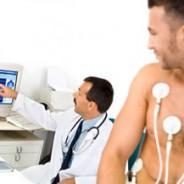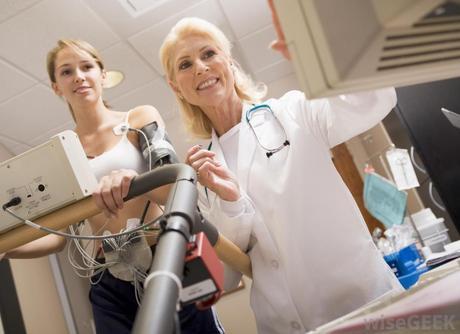
A nuclear stress test is a noninvasive imaging test that utilizes a tiny amount of radioactive material, referred to as a tracer. The tracer, which is injected to your arm, travels to your heart. The tracer emits a particular type of energy called gamma rays that may be detected by a special camera. The information is processed and reconstructed by computers to make a clear picture of your heart. These images can display damage to the heart muscle and blood circulation problems.
You may be given a nuclear stress test in case your doctor suspects you have coronary artery disease or any other heart problem, or if an exercise stress test alone wasn’t enough to target the cause of symptoms such as chest pain or shortness of breath. A nuclear stress test can also be recommended in order to guide your treatment if you have been diagnosed with a heart condition.
Preparing for Your Procedure
Do not eat or drink anything not less than three hours prior to your nuclear stress test. Seek advice from your physician to determine if all of your medications should be avoided for the leading up to your scheduled test. Be sure to bring all of your medications, in addition to any herbal or health supplements and over-the-counter medications, to the test along with you. Your physician might instruct you to definitely stop certain medicines before test. Wear loose clothing and comfy walking shoes.

Nuclear Stress Test
During Your Procedure
A nuclear stress test may take up to four hours. First, a technician injects a small amount of radioactive tracer through an IV, and advanced scanning cameras take images that record whether this tracer turns up in your heart. Like other heart tests, electrodes are put on your chest to monitor your heart’s electrical activity.
The pictures or images are fed right into a computer, which reconstructs them as “slices” of the three dimensional heart. The technicians gather two teams of images: the first set provides here is how your heart performs resting, and the second set provides information about how your heart performs with stress. Stress is accomplished as exercise stress, usually on the treadmill. If you are unable to exercise, a nurse will administer a medication to mimic the effect that exercise is wearing your heart. Prior to taking photos of your heart, you may be inspired to do light walking or stay hydrated to help improve the quality of the heart pictures.
After Your Procedure
Your physician will give you detailed instructions on how to get over a nuclear stress test. In general, you should get lots of rest after your test is finished. A cardiologist will review the outcomes of your test, and then your physician will contact you to definitely discuss the results.
It is possible the results from your nuclear stress test could lead to a general change in the treatment of your heart condition or additional cardiac procedures. The test can also be helpful in determining what kind of workout program is safe for you.
